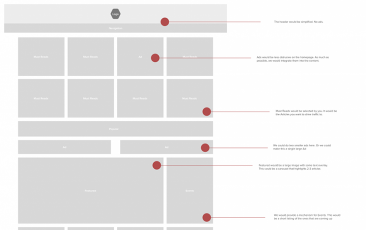Logos are everywhere, seen by everyone. From products and advertisements to store fronts and videos, logos are a part of daily life. They distinguish companies and products, making it easy for consumers to identify products they are interested in purchasing and attract them to what they consider to be a quality company.
When you look at a logo, do you ever wonder how the design came about or why a particular logo was chosen for that particular company? The logo is the first thing a consumer relates to when choosing a company, and a lot of research and design often goes into each one. An art education program focuses on things such as shapes and color choice for the basis of drawings and paintings. The logo also involves font choice and is designed with its own form of brand voice in mind. We will briefly discuss the effect each of these areas has on the design of the logo and begin to think a little about the design of some common logos.
Shapes
Shapes are the fundamental building block in any design process. They provide structure to the image being created, acting as a sort of frame for everything else to revolve around and fill up. When you look at the logo, the first thing you probably will recognize about it is the shape chosen for it.
Everyone can identify an Apple product from the iconic shape of the apple with a bite taken out of it. Why did they choose this shape? The designer was concerned the image would be mistaken for a cherry, so he added a bite to distinguish it as an apple. The Nike checkmark is also an iconic shape. The simplicity of the shape means that when you see it on a product, you can clearly tell the product was made by Nike.
With shape also comes the concept of the golden ratio, an art tool that has been perceived to be the most aesthetically pleasing way to present a shape. This is simply a division of the image into smaller shapes that match sizes in specific proportions to each other, often utilizing squares or curves. Pepsi’s circular logo and three interior curves fit within the golden ratio.
Color Choice
Another important part of the design process is the choice of colors used in the logo. Shapes are meant to be aesthetically pleasing and iconic while colors are meant to draw consumers to the brand. A lot of research goes into color choice and the effects each color has on consumers. The original Apple logo had a rainbow in it to not only advertise the addition of color to their computers, but also to make the company seem friendlier to the consumer market.
Different colors have been found to induce different emotions. For example, yellow is a bright color that aids in making a brand visible in addition to suggesting happiness, and is a mild sort of color. Red is an intense color that is used to evoke stronger emotions, such as love and action. Green and brown are often associated with nature, while black is often associated with menace, simplicity or boldness. Which color you choose depends on the emotion you want your consumers to feel when they see your logo.
Font Choice
Font choice is an important part in industrial design. The chosen font must be able to distinguish itself from the fonts of the competition, important for logos that include the name of the company in addition to the shapes, or if the logo is just the name of the company.
Disney utilizes the iconic Walt Disney signature for its logo. Google uses a thick font type that is closer to their flatter design in the Android operating system. FedEx is written so that an arrow appears between the E and the X.
The chosen fonts for a logo are clean and legible since they are representative of the company. In the case of tech companies, their logos reflect the design they are utilizing in their operating systems and software products. Other companies use the signatures of their founders, popular font styles from the days they were founded, or a highly visible font style that can be identified from great distances away or are representative of the company as a whole.
Brand Voice
Every aspect of the logo design must be aware of brand voice. The shapes, colors and fonts all come together to create a logo that represents what the company stands for, sells or features that make the company unique. With many companies often competing in the same markets, it’s important for each company to distinguish itself quickly with an image that consumers can quickly identify and be drawn towards.
If we can help you with navigating the waters of logo design or branding, let us know. We would love to help you create the perfect mark to represent your business.



